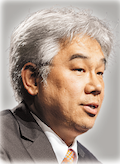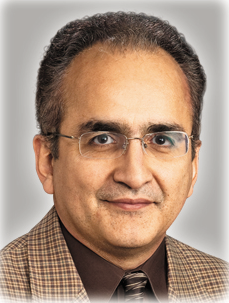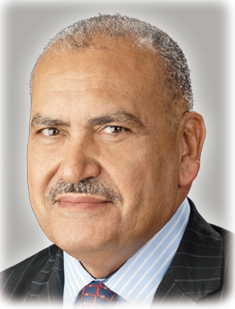Article
Best of AUA 2015: PCa surveillance, surgical controversies create buzz
Author(s):
Urology Times’ “Best of AUA 2015” report provides a guide to the meeting’s take-home messages in 15 therapeutic areas-an information-packed, condensed summary of the top papers and presentations.
New Orleans-It’s been said that the best treatment for low-risk prostate cancer is no treatment at all. A number of studies at the 2015 AUA annual meeting appeared to bear that out, showing active surveillance to be a safe and increasingly common approach in this patient population.
The meeting’s “Crossfire: Controversies in Urology” was a highlight for the second year in a row, with debates about whether shock wave lithotripsy should be retired and whether focal therapy for prostate cancer is hope or hype drawing big crowds.
Abstracts comparing surgical techniques, including robotic techniques, were hot, as were studies on new treatments for BPH, the use of mesh in pelvic organ prolapse, and the safety of testosterone replacement therapy.
Urology Times’ “Best of AUA 2015” report provides a guide to the meeting’s take-home messages in 15 therapeutic areas-an information-packed, condensed summary of the top papers and presentations. The editors’ choices for high-interest messages are highlighted in boldface type.
Click below to jump a disease state:
Prostate Cancer
Basic Science Research
Infection/Inflammation
Infertility/Andrology
Stone Disease/Endourology
Transplantation/Vascular Surgery
Penile, Testis, and Urethral Cancer
Trauma/Reconstruction/Diversion
Sexual Function/Dysfunction
Female Urology/Incontinence/Urodynamics
BPH/LUTS
Minimally Invasive Surgery (Laparoscopy/Robotics)
Outcomes Analysis
Kidney Cancer
Bladder Cancer
NEXT: Prostate Cancer

- A retrospective review of 223 patients managed with AS found that obese men were twice as likely to have disease progression on biopsy than non-obese men. There was a trend toward high-grade cancer in men in whom AS failed despite no difference in body mass index on the initial diagnostic biopsy.
- In a prospective study, obesity was significantly associated with high-grade and metastatic disease in men with clinically localized prostate cancer.
- Current metformin use was associated with a significantly decreased risk of prostate cancer in a nested case-control study.
- In a meta-analysis of 18 studies, testosterone replacement therapy for symptomatic hypogonadism did not increase levels of PSA nor the risk of prostate cancer development.
- Metformin use was associated with a significant survival advantage among diabetic veterans with prostate cancer.
- Magnetic resonance fusion targeted biopsy detected more Gleason grade ≥7 cancer than 12-core systematic biopsy, missing 4% of men with mSS ≥4 lesions while systematic biopsy missed 15%.
- Magnetic resonance fusion targeted biopsy reduces the detection of indolent disease while significantly improving the detection and risk stratification of high-grade prostate cancer.
- Positive [11c] choline positron emission tomography/computed tomography after biochemical failure predicts prostate cancer survival in hormone-naïve prostate cancer patients.
- Combining urine PCA3 and TMPRSS2:ERG tests can enhance detection of high-grade prostate cancer. When sensitivity was set to 95%, the specificity improved to 39%, avoiding 49% of unnecessary biopsies. In a validation cohort, specificity was improved to 33% while retaining high sensitivity (93%).
- Combined risk scoring based on epigenetic profiling of GSTP1, APS, RASSF1, and histopathology is strongly correlated with the detection of aggressive prostate cancer upon repeat biopsy.
- The 17-gene Genomic Prostate Score (GPS) assay may improve risk stratification for men with newly diagnosed prostate cancer who are candidates for active surveillance.
- For prostate cancer patients considering deferred treatment, the combined clinical cell cycle risk score provides significant prognostic information at disease diagnosis.
- The 4Kscore maintains good discrimination for risk of high-grade prostate cancer in a subpopulation of men with PSA ≤4.0 ng/mL, with a sensitivity of 95% and a specificity of 56%.
- Homogeneous PTEN loss is associated with decreased time to biochemical recurrence; this effect is much stronger in ERG-negative tumors than in ERG-positive tumors.
- Hybrid PET and magnetic resonance imaging may be advantageous in men with PSA <1.0 ng/mL by increasing diagnostic certainty.
- 68Ga-HBED-prostate-specific membrane antigen/PET hybrid imaging has a high sensitivity and superb specificity and accuracy for lymph node staging in intermediate- to high-risk patients with prostate cancer, and may replace current standard imaging in the future.
- Even in the context of node-positive prostate cancer, patients may have long-term survival after radical prostatectomy and extended pelvic lymph node dissection.
- In a single-institution review of 1,131 patients who qualified for active surveillance, 51% were found to have an upgraded Gleason score. Patients should be provided appropriate education and counseling about the risk associated with active surveillance.
- African-American men had similar functional outcomes after robotic prostatectomy as non-African-Americans, but African-Americans were slower to recover continence and less likely to achieve “trifecta” status.
- Metabolic syndrome is associated with an increased risk of extraprostatic and high-grade disease on final RP pathology, and an increased need for salvage therapy. However, with more aggressive resection, similar failure-free outcomes can be achieved in well-selected patients.
- Intermittent androgen deprivation (ADT) may be a valid option for select patients with locally advanced prostate cancer or relapsing M0 prostate cancer.
- Results from the SEARCH database show an overall survival benefit for men with biochemical recurrence after radical prostatectomy if ADT is initiated before PSA reaches 10.0 ng/mL. This benefit is stronger when ADT is initiated before PSA reaches 5.0 ng/mL. The survival benefit of ADT, however, must be weighed against long-term side effects.
- Sipuleucel-T (Provenge) plus ADT show durable PSA responses, regardless of their sequence, in men with biochemical recurrence of prostate cancer at high risk of developing metastases.
NEXT: Basic Science Research
Basic Science Research
Presented by Sunil Sudarshan, MD, University of Alabama, Birmingham
- Detrusor overactivity induced by cerebral infarction is associated with enhanced activity of Rho-kinase.
- Urge incontinence in women is associated with subcortical changes, including atrophy of the hippocampus.
- Enhanced spinal glycinergic signaling reduces detrusor overactivity in rats with spinal cord injury.
- A drosophila model of xanthinuria demonstrated a role for heterogeneous nucleation in non-calcium urinary stones.
- Oxalobacter formigenes colonization normalized oxalate excretion in a rat hyperoxaluria model.
- siRNA knock down of glyoxylate oxidase reduced urinary oxalate excretion in a mouse model of primary hyperoxaluria Type I, representing a potential new target.
- Inhibition of pericyte function with an anti-platelet-derived growth factor receptor beta-blocking antibody induced deterioration of erectile function in normal mice.
- Alpha-adrenergic modulation improved erectile function after bilateral crush cavernosal nerve injury in rats.
- A vascular leakage blocker (SAC-1004) restored erectile function in a chemically induced mouse diabetes model.
- Gene expression profiling suggests distinct molecular subtypes of BPH driven by differences in androgen gene regulation.
- BPH expresses higher levels of ligand-independent Arv7 than normal prostate, which has implications for treatment with 5-alpha-reductase inhibitors.
- Whole exome sequencing identified NPAS2 mutations in a family with nonobstructive azoospermia.
- A subset of infertile patients carries the G75C polymorphism in PGAM4, an X-linked retrogene.
- Antioxidant supplementation during cryopreservation improves post-thawing sperm parameters.
- Decellularized colon represents a potential natural collagen scaffold for bladder replacement.
- Bioprinting of human urethra with stem cells can be done without the need for scaffold.
- ERG fusions are less frequent in the index tumors of African-American men compared with Caucasians.
- ERG overexpression is uncommon in anterior tumors, meaning that tumor genotype may be driven in part by its microenvironment.
- Gli3 can bind and co-activate androgen receptor signaling.
- ERG transcription factor regulates the expression of the androgen biosynthetic enzyme AKR1C3.
- Loss of DAB2IP potentiates tumor cell growth and reprograms the expression of steroidogenic enzymes.
- SPOP mutation sensitizes prostate cancer cells to DNA-damaging agents such as PARP inhibitors.
- Small molecule inhibition of ERG with YK-4-279 inhibits tumor growth in patient-derived prostate cancer xenografts.
- sSD70, a KDM4 histone demethylase inhibitor, synergizes with approved medications for castration-resistant prostate cancer.
- Estrogen receptor alpha inhibits the development of bladder cancer using a carcinogen-induced tumor model.
- Vimentin and plectin play a role in the stability of invadopodia, which promotes cancer cell invasion.
- Aldo-keto reductase 1C1 expression is high in metastatic bladder cancer sublines, supporting a role in invasion.
- Long noncoding RNAs have been implicated in bladder cancer proliferation, invasion, and maintenance of self-renewal in bladder cancer stem-like cells.
- Adipose tissue-derived factors can promote bladder cancer migration.
- Exosomes from bladder cancer cells can induce epithelial-mesenchymal transition in recipient urothelial cells.
- Targeted sequencing demonstrated that bladder tumors following radical nephroureterectomy are true recurrences as opposed to de novo tumors.
- Novel targets identified from high throughput screening include an androgen receptor antagonist, mTORC1/2 inhibitor, and an FGFR inhibitor.
- Pooling DNA from multiple tumor regions accurately profiles a renal tumor’s genetic landscape.
- Loss of DNA 5-hydroxmethylcytosine in clear cell renal cell carcinoma (RCC) has a potential role in the hypermethylator phenotype.
- Aggressive chromophobe RCC showed enrichment for TP53 mutation in 70% and PTEN loss in 45%.
- PI3Kbeta Inhibitor TGX221 selectively inhibits clear cell RCC with VHL and SETD2 mutations.
- Overexpression of Mps1 in ccRCC confers tumor selectivity of heat shock protein 90 inhibitors.
NEXT: Infection/Inflammation

- PP1alpha gene therapy could be a novel treatment of overactive bladder/hypersensitive bladder disorders and interstitial cystitis (IC)/bladder pain syndrome (BPS).
- A randomized controlled trial demonstrates that subcutaneous tanezumab is a promising therapy for female patients with IC/BPS.
- A single intravesical injection of botulinumtoxinA (Botox) is effective to reduce bladder pain symptoms in patients with IC/BPS.
- Preliminary results from a 15-patient study indicate that a single intravesical instillation of 2,00 U of botulinumtoxinA premixed with 40 mL of reverse-thermal gelation hydrogel has efficacy for weeks in the treatment of painful bladder syndrome/IC.
- Late-onset hypogonadism was significantly correlated with the presence and severity of prostatitis-like symptoms.
- Testosterone replacement therapy (TRT) can improve clinical symptoms, quality of life, and psychological status in hypogonadal patients affected by chronic prostatitis/chronic pelvic pain syndrome (CP/CPPS).
- Installation of fecal microbiome of IC patients into rats induced bladder pain behavior. Specific taxa may modulate IC symptoms and represent novel biomarkers for diagnosis.
- Women with symptoms of urologic chronic pelvic pain syndrome appear to have chronically enhanced connectivity that may indicate the presence of central nervous system alterations.
- Microsurgical denervation of the spermatic cord can provide pain relief in a subset of patients with orchalgia with minimal morbidity.
- Therapeutic Magnetic Resonance, an FDA-approved device for the treatment of pain, represents an effective treatment for chronic orchalgia. The mean nadir pain level was 39% lower than baseline after treatment and 58% lower than baseline after 12 weeks.
- Pre-biopsy rectal enema did not lead to a significant decrease in complications, visualization, or diagnostic accuracy compared with the absence of pre-biopsy enemas.
- Povidone-iodine painting of the anterior rectal wall prior to transrectal prostate biopsy decreased the rate of complications and infection-related hospitalizations, without an increase in irritative symptoms.
- A correlation exists between the duration of catheter use and fibrinogen deposition, which may explain why prolonged catheterization leads to more UTIs than CIC.
- In a retrospective cohort study of 44,292 men with prostate cancer, active surveillance (AS) was frequently applied and the rate seemed to increase over time, from 26.4% in 2002 to 36.0% in 2010. About 62% of men on AS eventually moved on to definitive treatment.
- Future diagnostic/therapeutic approaches for neuropathic bladder may involve the manipulation of the microbiome.
- Actinobaculum may contribute to lower urinary tract symptoms.
- Transcutaneous near-infrared spectroscopy system optical monitoring of an absolute measure of bladder wall oxygenation may offer a means of screening for diagnosis of UTI.
- A biosensor array consisting of 16 sensors, each capable of detecting specific bacterial 165 rRNA, reduces the time of pathogen identification and minimum inhibitory concentration from 2 or 3 days to 6 hours.
- Factors associated with a higher risk of recurrent infections after surgical stone extraction included African-American race, males with type 2 diabetes, and hypertension. Patients undergoing percutaneous nephrolithotomy were more likely to be rendered infection free compared to shock wave lithotripsy.
- Concentrated cranberry supplementation reduces colony counts and prolongs the time to symptomatic UTI in patients with neurogenic bladder dysfunction who are dependent on self-catheterization.
- Current smokers remain at increased risk of readmission following radical cystectomy.
- Among 47 cases of stent and urine culture in patients with UTI and stent, in the vast majority, the stent was not the source of the UTI. Therefore, immediate stent removal or exchange may not be necessary.
- A liposomal formulation of tacrolimus (Prograf) may be a new intravesical therapy for the treatment of radiation cystitis.
NEXT: Infertility/Andrology

- Cancer survivors experience significant regret for not banking sperm. Sperm cryopreservation should be offered to all adult men with cancer regardless of age.
- A practical animal model for human spermatogonial stem cell transplantation has been developed.
- Only 0.2% of ultrasound procedures performed for pain identified a non-palpable malignant scrotal mass. A cost-benefit analysis is necessary to determine whether scrotal ultrasound should be performed in the management of scrotal pain.
- The odds of sperm banking increased threefold in men who received counseling.
- Male fertility insurance coverage is disproportionally excluded from state laws.
- Factors that should be considered when a patient presents with obstructive azoospermia following vasectomy are the female’s age, number of children the couple desires to have, obstructive interval from the time since vasectomy, costs involved with vasectomy reversal of intracytoplasmic sperm injection (ICSI), long-term safety of ICSI, concerns of the couple, and their religious beliefs.
- The reported risk of aggressive and potentially lethal prostate cancer in men who undergo vasectomy is modest, and there is no plausible biologic link.
- Men with azoospermia have a greater risk of cancer compared with men with sperm in ejaculate.
- Men with ≥2 abnormal semen parameters have a greater risk of mortality compared with men with ≤1 abnormal semen parameter.
- Up to 40% of men with normal semen parameters can display significantly elevated levels of sperm aneuploidy.
- The evidence for medical therapy for idiopathic male infertility remains empiric. Controlled trials with clearly defined outcomes are needed before medical therapy can be used routinely for the management of male infertility.
- Enclomiphene citrate does not significantly affect sperm density, whereas gel-induced TRT decreases sperm density.
- LPCN 1021, a novel oral TRT, maintains testosterone levels in the eugonodal range, with a mean Cave of 447 ng/dL and mean Cmax of 1,128 ng/dL. Some 85% of hypogonadal men required one titration or fewer.
- Testosterone studies have numerous obstacles (ie, the number of levels drawn, time at which they are drawn, laboratories with different normal ranges, assay variability) that must be considered when analyzing and interpreting results.
- The appropriate indications for TRT are primary hypogonadism and secondary hypogonadism. Myocardial infarction and stroke are now on the label as possible risks of TRT.
- A study of 217 men shows that TRT appears to be safe, with no excess of thrombotic events, for the treatment of hypogonadism in elderly men.
- There is a need for sexual and reproductive health education, specifically for minority young males.
NEXT: Stone Disease/Endourology

- Lower age, lower body mass index, and treatment of a right-sided stone increased the risk of an arrhythmia during shock wave lithotripsy (SWL). Rotating the patient 15° to 20° when an arrhythmia occurs may allow the procedure to continue without arrhythmia recurrence.
- Interim findings from a multicenter prospective trial show that when treating renal stones (5-20 mm) by ureteroscopic lithotripsy, basketing had a higher stone-free rate than dusting (91.8% vs. 69.2%) while consuming more disposables and taking more time. None of the residual fragments in the basketing group were >4 mm versus 25% of those in the dusting group.
- Degree of independence determined by preoperative assessment of an activities-of-daily-living score was an independent predictor of complications after percutaneous nephrolithotomy.
- Treatment with alendronate (Fosamax) in men and postmenopausal women with clinical osteoporosis and recurrent calcium stone disease reduced the risk of future urolithiasis.
- Patients whose stone surgery was delayed >45 days after diagnosis had a 3.4-fold increase in antibiotic use, 15-fold increase in clinic visits, 3.6-fold increase in ER visits, and a 5.7-fold increase in secondary imaging studies compared with their counterparts whose time to treatment was shorter.
- Holmium laser fiber tips cleaved with a straight Mayo scissors were likely to cause damage to the ureteroscope and ureters; a ceramic scissor or scribe pen were better options for cleaving the laser fiber tip.
- Inhibition of liver glycolate oxidase using siRNA treatment decreased urinary oxalate excretion in a mouse model of primary hyperoxaluria type 1.
- Analysis of gene expression profiles in renal papillary tissue samples obtained from idiopathic calcium oxalate stone formers suggested a role for dysregulation of M psi-related genes in the development of Randall’s plaque.
NEXT: Transplantation/Vascular Surgery
Transplantation/Vascular surgery
Presented by Dicken Shiu-Chung Ko, MD, Harvard Medical School, Boston
- Robotic kidney transplantation performed through a 5-cm incision was not associated with additional complications nor with any cases of delayed graft function compared to an open approach.
- Laparoscopic nephrectomy with autotransplantation was safe, effective, and associated with good long-term durability when the surgery and follow-up were performed by an experienced multidisciplinary team.
- Low estimated glomerular filtration rate in living kidney donors without other major comorbidities did not have a significant impact on health-related quality of life.
- PSA screening to determine kidney transplant candidacy did not affect overall survival of patients who received kidney transplants, but their survival was significantly reduced by a diagnosis of prostate cancer.
- A review of 17 published series supports the safety of radical prostatectomy in renal transplant recipients as they had similar morbidity compared to the general population of men with prostate cancer.
- Analyses based on data from four major European centers found that renal transplant recipients with nonmuscle-invasive bladder cancer could be safely treated with either mitomycin-C or bacillus Calmette–Guérin. Cancer recurrence rates were similar in the treated patients compared to those who had no treatment, raising the question of whether the recurrence rate was affected by a change after bladder cancer diagnosis to mTOR inhibitor treatment for immunosuppression.
- A review of current evidence suggests renal transplant using kidneys after excision of renal cell carcinoma is safe and feasible in selected patients with end-stage renal disease.
- The risk of prostate cancer in men receiving immunosuppression after solid organ transplantation was significantly increased (29- to 34-fold, depending on ethnicity), but only after 10 years, probably due to the effect of prostate cancer screening prior to transplant.
- A survey of transplant surgeons revealed variations in practice patterns for PSA screening and prostate cancer treatment, suggesting a need for developing universal guidelines.
- The United Network of Organ Sharing seems to have attenuated racial disparity in kidney transplantation, but rates of live donations in the United States are still low in African-Americans.
- A meta-analysis showed anticoagulant and antiplatelet agents may reduce allograft thrombosis after kidney transplantation, although anticoagulant use alone did not reduce thrombosis risk and was associated with increased bleeding rates.
- Non-simultaneous extended altruistic donor chains were an effective tool for increasing the efficiency of kidney paired donation.
- A systematic PubMed review found that compared with endourologic management, an open approach for treating distal ureteric stricture after renal transplantation had a higher success rate (85% vs. 58%) and fewer complications. The authors also developed a decision-tree diagram to guide management decisions.
- Surgeon experience based on procedural volume correlates with risk of complications after renal transplant, regardless of surgeon specialty.
- Pre-implantation biopsies of kidneys from deceased donors may help to reduce kidney discard rates.
- Reduction of immunosuppression during Clostridium difficile-infectious diarrhea did not increase the risk of graft rejection in kidney transplant recipients.
- Among cytomegalovirus (CMV) seropositive patients who underwent kidney transplantation without CMV prophylaxis, pre-transplant low IgG titer against CMV, being on a potent immunosuppressive protocol, and a high MPA level at 1 month post-transplant were risk factors for developing high-grade CMV reactivation.
- Heat shock protein 90 could be a new biomarker for acute rejection after kidney transplant.
- Vitrification of metanephros showed promise as a technique for biobanking kidney tissue.
- A study investigating the mechanism of allograft rejection after partial lymphocyte depletion suggested a role for strategies that can control T cell proliferation and differentiation during lymphopenia.
- Risk of dyslipidemia after renal transplantation may be influenced by the glucocorticoid receptor Bcl I G allele.
- Renal vascularization is helpful in preserving renal function in patients with renal artery stenosis due to Takayasu’s aortoarteritis and appears to minimize the need for antihypertensive medications.
- Low-dose intravenous heparin improved kidney-pancreas transplant outcomes by reducing pancreas graft thrombosis and did not increase bleeding risk.
- Routine ureteral stenting in kidney transplantation did not decrease the rate of ureteral complications.
- Resecting the inferior vena cava (IVC) without grafting in patients with advanced urologic malignancies was associated with a 23% rate of deep venous thrombosis and a 36% rate of lower extremity edema, but mitigated complications associated with IVC graft replacement.
- Urologic complications after pediatric kidney transplant occur more often in children who are younger and who have a urologic etiology for end-stage renal disease. Voiding cystourethrogram does not need to be done routinely postoperatively, but can be performed in patients who develop a UTI.
NEXT: Penile, Testis, and Urethral Cancer

- Management of bulky inguinal lymph node masses in patients with penile cancer remains controversial, but neoadjuvant chemotherapy can be chosen in carefully selected patients.
- Inguinal extranodal extension or having ≥2 inguinal tumor-positive lymph nodes predicted pelvic tumor-positivity in penile cancer patients without evidence of pelvic involvement; the 5-year disease-specific survival rate for patients with pelvic involvement treated with surgery alone was only 17%.
- An analysis of Surveillance, Epidemiology, and End Results data found local tumor excision for treatment of early-stage penile squamous cell carcinoma is increasing and was associated with a 4-year penile cancer-specific mortality rate of 9.8%.
- There has been excessive use of imaging in men with low-risk penile cancer.
- Pelvic extranodal extension in penile cancer patients is associated with a worse outcome, but adjuvant chemotherapy may provide a slight survival benefit for these men.
- In vivo optical biopsy using confocal laser endomicroscopy predicted histology, especially carcinoma in situ, in penile cancer patients who subsequently underwent penectomy.
- Among patients with various genitourinary malignancies, those with bladder cancer had the highest suicide rate within the first 5 years after diagnosis and the rate was highest among prostate cancer patients at 15 years after diagnosis. Increasing age, aggressive disease, and Caucasian race were risk factors for suicide.
- Urethra-preserving surgery was shown to be a feasible technique for managing distal urethral carcinoma and carcinoma in situ; there was a positive margin rate of 33% after primary excision despite frozen sections.
- Among patients with locally advanced primary urethral cancer, use of neoadjuvant chemotherapy/chemoradiotherapy was associated with better survival than surgery followed by adjuvant chemotherapy.
- A history of testicular cancer was associated with an increased risk of intermediate/high-risk prostate cancer.
- Abnormal pituitary-Leydig cell function was present prior to orchiectomy in 72% of patients with testicular germ cell cancer; pituitary-Leydig axis dysfunction was most common in patients with non-seminomatous germ cell tumors (NSGCT) or stage III disease.
- In the United States, retroperitoneal lymph node dissection (RPLND) in patients with testicular cancer is being performed more in academic centers than in community or comprehensive cancer centers.
- Rates of RPLND for stage 1 NSGCT decreased significantly between 1998 and 2011 from 23 % to 12.9%, while use of primary chemotherapy increased from 20.7% to 32.5%.
NEXT: Trauma/Reconstruction/Diversion
Trauma/Reconstruction/Diversion
Presented by Robert C. Kovell, MD, Wake Forest Baptist Medical Center, Winston-Salem, NC
- Practice patterns for the treatment of urethral stricture are changing, with the shift favoring urethroplasty versus endoscopic treatment.
- A review of 91 men treated for anterior urethral strictures found 84% underwent direct vision internal urethrotomy/dilation without previous imaging, 90% were treated without being counseled about urethroplasty, and 70% had multiple dilations without being informed of urethroplasty.
- Use of a non-transecting anterior urethroplasty technique in patients with short, proximal bulbar strictures had a low incidence of side effects and a 97% success rate based on no evidence of stricture recurrence.
- Stricture resolution rates were similar comparing transected and non-transected bulbar urethroplasty for bulbar urethral strictures.
- Cavernosal arterial blood flow was not predictive of the success of pelvic fracture urethral injury repair, but there was a trend for an association between low flow (≤25 cc/sec) and increased rate of bulbar necrosis.
- A noninvasive protocol to monitor for stricture recurrence after urethral reconstruction that combines patient-reported outcome measures and uroflowmetry data had a 92% sensitivity and 63% specificity; its use would have allowed nearly 60% of men to avoid unnecessary cystoscopy.
- Experience matters when it comes to success rates of male urethral reconstruction-surgeons reach proficiency (>90% success rates) after performing about 100 urethroplasty cases.
- In a study including data from four centers of excellence, a 91.5% overall success rate was achieved in men who underwent reconstruction of rectourethral fistulas after prostate cancer treatment.
- Initial results are promising for robotic buccal mucosa graft ureteroplasty as an approach for managing difficult urethral strictures.
- Readmission rates after treatment of grade 3 and grade 4 renal injuries may be higher than appreciated (18% and 24%, respectively), but these patients can usually be managed conservatively.
- Understanding the epidemiology of concomitant colorectal and genitourinary injuries in armed service personnel is being looked at to guide strategies for injury prevention, initial surgery, and subsequent reconstructive surgery.
- Robotic radical cystectomy with intra-corporeal urinary diversion was technically feasible and associated with about the same level of complications as open diversion.
- Researchers reported success with technology to print 3-D organ structures.
NEXT: Sexual Function/Dysfunction

- Results of ultrasound-guided evaluation of erectile dysfunction depend on the anatomic placement of the probe on the penis.
- Vascular risk factors do not predict hemodynamic outcomes.
- Failure to achieve full stretched penile length predicts veno-occlusive dysfunction.
- Use of audiovisual stimulation did not affect total erectile rigidity or number of intracavernosal injections required for treatment.
- De novo Peyronie’s disease occurred in 17.4% of 276 men following radical prostatectomy, suggesting a need to address the issue during preoperative counseling.
- Percutaneous stent revascularization of the internal pudendal artery is safe and appears promising.
- Analysis of eight studies of extracorporeal shock wave lithotripsy for ED showed safety and clinically significant, durable improvement overall and across the individual trials.
- Low-dose extracorporeal shock wave therapy improves erectile function in diabetic rats, and the effect is enhanced with the addition of sildenafil citrate (Viagra). Separately, researchers found that low-intensity pulsed ultrasound improved erections and restored endothelium and smooth muscle in diabetic rats.
- Cultures of clinically non-infected implanted penile prostheses (IPPs) showed a threefold higher rate of positive cultures in uncoated versus coated devices.
- A subcoronal incision for IPPs showed a 75% satisfaction rate and 3% infection rate at 90 days in >100 procedures.
- Cardiac and pudendal arteries exhibited similar remodeling and calcium content, failing to support the hypothesis that ED precedes cardiovascular disease because of smaller arterial circumference.
- Pericytes function as a cellular regenerator, suggesting a potential new target for ED therapy.
- Pioglitazone (Actos) enhanced survival of pelvic ganglion in a preclinical model of pelvic nerve crush, suggesting a possible role in neuroprotection.
- A study of timing of surgical repair for penile fracture showed that surgery initiated more than 8 hours after ER admission was associated with worse erectile function at 1 and 3 months.
- Treatment of Peyronie’s disease was associated with a decrease in the rate of partners’ sexual dysfunction from 75% before treatment to 33.3% afterward.
NEXT: Female Urology/Incontinence/Urodynamics

- A retrospective review of 46,648 patients with overactive bladder (OAB) showed that only 34% of women and 19% of men received anticholinergic therapy, and diagnostic testing was performed infrequently.
- Among patients receiving botulinum toxin (Botox) injections, asymptomatic bacteriuria significantly increased the risk of urinary tract infection, but not urosepsis or hospitalization.
- Decreasing the number of botulinum toxin injection sites from 20 to 10 did not reduce efficacy.
- A 4-year follow-up study of patients with neurogenic bladder showed consistent maintenance of improvement from year to year after treatment with onabotulinum toxin.
- Onabotulinum toxin and abobotulinum toxin (Dysport) for neurogenic bladder led to similar outcomes.
- A study of 103 patients with idiopathic OAB showed that 30% of patients required clean intermittent catheterization after treatment with onabotulinum toxin, suggesting a need for standardized definitions and better defined risk factors for patient counseling.
- A 3-year follow-up study of 272 patients treated with sacral neuromodulation (InterStim) showed improvement in depression, pain, and sexual function, and a device-related adverse event rate of 44%.
- A retrospective review of sacral neuromodulation cases showed that most procedures that began as bilateral implant cases ended with unilateral leads.
- A single functional electrode in a tined lead predicted clinical success in patients treated with sacral nerve stimulation.
- Age does not adversely affect outcomes after sacral nerve stimulation.
- A 10-year review of 100 patients with cerebral palsy and neurogenic voiding dysfunction suggested that a non-operative approach should be performed in the absence of compelling indications.
- Following an FDA announcement about complication risks with surgical mesh for pelvic organ prolapse and stress incontinence, use of mesh decreased progressively and use of bulking agents and pubovaginal slings increased.
- A review of 6,900 pelvic organ prolapse repairs showed that use of mesh was associated with higher rates of blood transfusion and surgical site infection.
- A study of 60,000 community-based patients with stress urinary incontinence treated with mesh showed revision rates of 1.2% at 1 year and 2.5% at 10 years.
- A randomized study of open versus laparoscopic sacral colpopexy for prolapse showed similar outcomes but less morbidity and blood loss and shorter recovery with laparoscopic procedures. However, asymptomatic anterior wall prolapse occurred more than twice as often with laparoscopic procedures.
NEXT: BPH/LUTS

- Older age and obesity are associated with suppression of 5-alpha-reductase 2 (5AR2) gene expression and increased methylation of the 5AR2 gene promoter, suggesting a mechanism of resistance to treatment with 5AR inhibitors.
- Molecular profiling of tissue specimens identified “androgen up” and “androgen down” subtypes, suggesting a mechanism for lack of response to 5-ARI therapy.
- Bladder outlet obstruction (BOO) associated with detrusor overactivity and BOO without overactivity have different mRNA transcriptomes and gene expression profiles.
- Body mass index and metabolic syndrome were associated with prostate growth in a population-based study of 1,108 men.
- Analysis of data from the Prostate Cancer Prevention Trial showed that statin use was associated with a 41% increase in the risk of BPH.
- Men with a waist circumference >102 cm had an increased likelihood of incomplete recovery of lower urinary tract function and storage as assessed by the International Prostate Symptom Score (IPSS).
- Older men with BPH had improved hematogenesis and bone mineral density when treated with dutasteride (Avodart).
- Combination therapy with an alpha-blocker and tadalafil (Cialis) proved more effective for BPH than an alpha-blocker alone.
- Three-year results with prostatic urethral lift (UroLift) treatment for BPH showed a 43% improvement in AUA Symptom Score compared with baseline, preserved sexual function, and a 9% retreatment rate.
- A randomized, sham-controlled trial of water vapor treatment for BPH showed greater than 50% reduction in IPSS and 4.9 mL/sec improvement in urinary flow rate.
- A small clinical trial of image-guided, robot-assisted water jet ablation of the prostate showed an improvement in mean IPSS from 23 to 8.9 and increase in peak urinary flow from 8.6 to 21.7 mL/sec at 6 months.
- Six-year follow-up results for 500 patients with BPH treated with a thulium laser showed durable outcomes in all age groups and baseline prostate volumes.
- A study of male urethral sling revision by means of imbricating sutures showed that seven of 16 patients achieved continent status, associated with a reduction in median pad count from 4.0 to 1.3.
NEXT: Minimally Invasive Surgery (Laparoscopy/Robotics)
Minimally Invasive Surgery (Laparoscopy/Robotics)
Presented by Benjamin R. Lee, MD, Tulane University, New Orleans
- Several studies revealed progress in the use of 3-D printers to produce kidney tumor models for preoperative planning, including simulated nephrectomy procedures.
- “Crowdsourced” reviews of laparoscopic/robotic surgical videos posted on the Internet compared favorably with assessments by faculty physicians.
- Studies of head-worn 3-D cameras to improve outcomes with endoscopic and laparoscopic procedures received positive reviews in trials involving bedside surgical assistants.
- A randomized trial to compare concomitant bladder neck sling and robotic prostatectomy alone showed higher rates of continence at 1 months and 1 year, although the difference did not achieve statistical significance.
- Studies of agents to preserve sexual potency after robotic prostatectomy yielded favorable results with hyaluronic acid-carboxymethyl cellulose and dehydrated human amniotic membrane allograft, although the number of patients treated remains small and duration of follow-up is brief.
- A 319-patient study of expanded-indication robotic partial nephrectomy (T1b, >4 cm) had goals of negative surgical margins, absence of perioperative complications, and a warm ischemia time of <25 minutes. All three goals were met in 43.6% of cases.
- Another study of expanded-indication robotic partial nephrectomy (≥3 tumors in a single kidney) showed no change in the creatinine/glomerular filtration rate (GFR) ratio across 54 patients with chronic kidney disease I-III. Among patients with preoperative GFR <60 mL/min, mean creatinine level increased by 12% and estimated GFR decreased by 10%.
- A study of conversion from laparoscopic to open nephrectomy showed an overall conversion rate of 4.7% in 9,592 procedures. Factors associated with conversion were bleeding, difficult dissection, failure to progress, and tumor size.
- A review of 1,838 robotic partial nephrectomies showed an intraoperative complication rate of 2.1%, postoperative complication rate of 15.2%, transfusion rate of 2.7%, embolization in 0.2%, fistula in 0.7%, and postoperative acute renal failure in 0.05%.
NEXT: Outcomes Analysis

- All transurethral resections of bladder tumors are not the same. Patients with larger tumors had longer lengths of stay, longer OR times, increased risk of transfusions, increased risk of complications, and a 1.9% risk of mortality versus patients with smaller tumors.
- Robotic prostatectomy can decrease the risk of grade I and grade II complications in obese patients, but it had no impact on grade III, IV, and V complications.
- Two-thirds of patients with a 10-year life expectancy were treated aggressively for small renal masses. In patients who had a less than a 5-year life expectancy, one-third were aggressively treated.
- The compliance rate for selective medical therapy among kidney stone patients is about 55%. Patients were most likely to be compliant with thiazides and allopurinol and less likely to be compliant with citrates.
- In men screened for prostate cancer, use of herbal supplements declined significantly from 2003 to 2012. One exception was multivitamin utilization, which showed no difference.
- Patients on active surveillance for low-risk prostate cancer who had a family history of prostate cancer or increased risk of urinary symptoms were more likely to have anxiety.
- In a study of the appropriateness of imaging for prostate cancer, patients who were treated at a VA were less likely to receive inappropriate imaging for low-risk prostate cancer than their fee-for-service Medicare peers. For patients with high-risk prostate cancer, there was no difference in utilization of appropriate imaging.
- A change in CMS policy that increased reimbursement for office-based bladder cancer procedures by 600% led to a 600% increase in utilization of these procedures. Although CMS anticipated that increased office-based utilization would be associated with lower utilization of hospital-based procedures, there has been no reciprocal decrease.
- Using a Markov model to determine whether MRI-guided prostate biopsies are more cost effective than a standard 12-core biopsy, researchers found that MRI-guided biopsy was cost effective at 10, 15, and 20 years.
- An examination of side effect profiles after localized prostate cancer found that 59% were treated with radical prostatectomy, 24% with radiation, and 17% were managed with active surveillance. Patients receiving radiation had a slight decline in bowel dysfunction and a decrease in sexual function. Those who had RP had an initial decline in incontinence with a small rebound after 12 months, and they had a decline in sexual function with a subsequent plateau.
- In patients undergoing radical cystectomy, the enhanced recovery after surgery (ERAS) protocol showed no differences in 90-day minor or major mortality, number of complications, readmission or ER visits, but patients had a 12% lower risk of GI complications and a 9% lower risk of wound complications.
- Researchers developed a composite measure-notable outcomes and trackable events after surgery (NOTES)-defining an uncomplicated post-prostatectomy course: no rectal injuries, blood loss <400 cc, length of stay of ≤2 days, drain placement of ≤2 days, catheter placement of ≤16 days, no readmissions, and no mortalities. Twenty percent of patients had at least one deviation from this protocol; most common causes were blood loss, length of stay, and prolonged drains.
- Researchers examining the impact of readmissions to secondary hospitals after major urologic cancer surgery found that 10% of patients get readmitted, most often to the primary hospital but 29% of the time to an outside facility. Those admitted to an outside facility are at 7 times higher odds of dying compared to the primary hospital. High-volume centers were more likely to have readmissions to secondary hospitals, which is associated with increased mortality.
- Utilization of androgen deprivation therapy for localized prostate cancer decreased from 4% in 2004 to 2.5% in 2009.
- In patients with stage 1 seminoma, there has been a significant decrease in the use of radiation therapy over time, a significant increase in observation, and an increase in use of chemotherapy.
NEXT: Kidney Cancer

- Delivery of sorafenib (Nexavar) using PLGA and HMC-coated liposomes shows promise in the treatment of renal cell carcinoma (RCC).
- An antibody-independent platform shows potential for detecting circulating tumor cells in metastatic RCC patients.
- Expression profiles from a panel of 7 miRNA can be used to stratify patients with clear cell RCC.
- Interleukin-6 receptor antibody enhances the effect of tyrosine-kinase inhibitors.
- Inhibition of carbonic anhydrase 9 confers radiation sensitivity to RCC.
- Clusterine inhibition potentially enhances the antitumor activity of temsirolimus (Torisel).
- Overexpression of Mps1 in ccRCC confers tumor selectivity on heat shock protein-90 inhibitors.
- A non-diagnostic renal mass biopsy does not imply absence of malignancy.
- In a man aged 55 to 75 years with a T1a small renal mass, a pre-operative biopsy resulted in average savings of $5,447 per patient and a 0.19 quality-adjusted life year increase compared with empiric treatment.
- Average body mass index predicts total and fatal RCC. However, another group found improved cancer-specific survival in obese patients.
- The use of hemostatic agents during open and laparoscopic partial nephrectomy does not reduce perioperative blood transfusion rate.
- The debate over partial versus radical nephrectomy continues. One group reported no improvement in overall survival with partial compared with radical nephrectomy. However, another study found that partial nephrectomy patients were less likely to experience chronic kidney disease (CKD) stage ≥3 and/or end-stage renal disease as well as improved overall survival.
- Despite being younger and healthier, donor nephrectomy patients had a much greater decrease in glomerular filtration rate than a cohort of partial nephrectomy patients, including partial nephrectomy patients with warm ischemia time >30 minutes.
- A comparison of renal surgery patients with surgical CKD, preexisting CKD, or normal perioperative renal function found that surgical CKD appears to be a distinct subtype of CKD.
- Robotic multiplex partial nephrectomy is a reasonable surgical approach for multifocal renal tumors, even in patients with impaired renal function preoperatively.
- There is an increased rate of utilization of partial nephrectomy for T2 tumors.
- A survey of endourologists and urologic oncologists found that 57% of respondents feel that partial nephrectomy is equal to radical nephrectomy in the treatment of 4-10 cm RCC. In addition, 70% of respondents said they would enroll patients in a randomized clinical trial comparing partial and radical nephrectomy in 4-10 cm RCC.
- Neoadjuvant sunitinib (Sutent) in patients with tumor thrombus in RCC showed improved cancer-specific survival.
- Intensive local therapy to bone lesions may improve survival in RCC patients with bone metastasis.
- A multicenter systematic review and meta-analysis of targeted therapy for metastatic RCC found that these agents were associated with better overall survival, progression-free survival, and partial response over interferon or placebo.
- At interim analysis of a phase III randomized trial of IV mannitol (Osmitrol) versus placebo prior to renal ischemia during partial nephrectomy, criteria for early termination were not reached.
NEXT: Bladder Cancer
Bladder Cancer
Presented by Amar Singh, MD, University of Tennessee, Chattanooga
- In the search for markers in urothelial carcinoma, a microRNA panel in urinary cell pellets showed promising results in urothelial carcinoma detection. A 10-biomarker panel showed not only the ability to screen but also differentiate between urothelial and squamous cell carcinoma of the bladder. Blood-based markers-CEA, CA 19-9, and CA 125-may have a role of in urothelial cancers.
- At a follow-up of 6-1/2 years, the mortality from other smoking-related cancers (lung and renal cell) was higher than the mortality from bladder cancer.
- Both women and men who present with urinary tract infection at time of diagnosis have not only a delay in diagnosis, but also adverse pathology and higher mortality from bladder cancer.
- The likelihood of a timely and complete hematuria workup is lower in African-American males, and primary care providers are not as aware as we would like them to be of AUA guidelines for workup of hematuria.
- The implementation of the World Health Organization guideline for grading has had significant impact on grade migration and may have led to more aggressive treatment for some superficial bladder cancer patients.
- Use of molecular profiling may be helpful in addressing the inter-pathologist variation in grading of urothelial cancer.
- Tissue-based methylation may help discriminate between low- and high-grade urothelial cancers.
- Having a bladder cancer pathology review at a tertiary center by an experience GU pathologist is important, as it led to change in pathology in 27% of cases and a change in treatment recommendations in 16%.
- Incidental bladder wall thickening on CT was correlated with an overall cancer rate of 4.3%. Focal thickening was correlated with cancer in 15% of cases and diffuse imaging in only 4%.
- In nonmuscle-invasive bladder cancer, en bloc resection using both electrocautery and laser showed acceptable safety and efficacy.
- Probe-based confocal laser endomicroscopy, which incorporates real-time in vivo histo-endoscopy with traditional endoscopy and allows for tissue examination, may help ensure complete transurethral resection of bladder tumor.
- Bacillus Calmette–Guérin (BCG) was shown in several papers to still be the mainstay of effective intravesical therapy.
- BCG following a second transurethral resection for even a negative pathology may decrease bladder cancer recurrence.
- Compliance with maintenance BCG remains poor. Surprisingly, most cases of discontinuation (60%) are due to low-grade toxicity.
- The role of docetaxel (Taxotere) in BCG-refractory disease remains promising.
- In patients with high-grade nonmuscle-invasive disease, mitomycin C plus BCG and BCG alone showed similar recurrence and survival.
- Despite BCG being the standard of care for carcinoma in situ, its delivery is extremely low. Examination of a SEER-Medicare database of nearly 3,800 patients in the pre-BCG shortage era found that only 10% of patients who were eligible for BCG received it, and 85% received no adjuvant treatment. The BCG group had superior overall survival and delayed time to cystectomy.
- In muscle-invasive bladder cancer, a comparison of radical cystectomy versus bladder-sparing treatment including a chemoradiation protocol showed that cystectomy was associated with improved survival when the disease was organ confined, but if the disease was more advanced, there was no difference between the two treatments in overall survival or outcome.
- The interval time between diagnosis and radical cystectomy for muscle-invasive disease does not impact outcomes in patients on neoadjuvant chemotherapy.
- Neoadjuvant chemo does not increase surgical complexity or perioperative complications and is not associated with renal function decline.
- In the neoadjuvant chemo setting, dose-dense methotrexate, vinblastine, doxorubicin, and cisplatin (MVAC) is becoming more popular, as it may help decrease toxicity and decrease time to radical cystectomy in very high-risk patients.
- Deep vein thrombosis (DVT) remains a concern in radical cystectomy patients. In those receiving neoadjuvant chemo, 33% may have occult DVT that may be undiagnosed. Changing DVT prophylaxis from the inpatient-only setting to extended-duration enoxaparin or lovenox may decrease thromboembolic events.
- Preoperative antacid use, acute postoperative renal failure, and large antibiotic usage were identified as risk factors for developing Clostridium difficile after cystectomy, which is a complication in up to 10% to 15% of patients in this population.
- Long-term survival in patients undergoing radical cystectomy is independent of pathologist and lymph node count if surgeons adhere to a pelvic lymph node dissection template.
- Wound dehiscence in radical cystectomy is predicted by wound infection, smoking, increased operative time, and body mass index.
- Allogenic blood transfusion is related to increased perioperative infection rates.
- Broader antimicrobial coverage and adding antifungal may help decrease wound infection rates.
- Uncontrolled diabetes and obesity remain risk factors for post-cystectomy complications, reoperations, and mortality.
- Readmission after cystectomy remains a major challenge, with the highest rates between day 4 and 5 post-discharge. An approach using phone calls to detect patients at risk of readmission helped minimize it. Neobladder has the highest readmission rates; 50% of complications occur post-discharge; and 25% of readmissions happen even when enhanced recovery after surgery (ERAS) protocols are followed, UTI being the most common reason.
- Performance status, nutrition, absence of sarcopenia, and absence of obesity predict better outcome in patients following cystectomy.
- Robotic cystectomy has become more popular, and is safe in the elderly population. A robotic versus open series showed survival was similar, but the robotic group had more extranodal and peritoneal disease.
- A meta-analysis of factors predicting intravesical recurrence in upper tract urothelial cancer (UTUC) identified positive cytology, ureteral location, stage, necrosis, multifocality, extravesical cuff removal, laparoscopic approach, and positive surgical margins.
- The role of a nomogram in predicting UTUC recurrence at 12, 24, and 36 months was further validated; recurrences were seen in 29% of patients.
- Decreased urinary pH (<5.5) may be a risk for bladder recurrence, and perioperative blood transfusion is also an independent risk factor for worse survival in UTUC patients.
- Basic science papers showed that differences in DNA methylation helped predict metastatic potential and aggressiveness of urothelial carcinoma; neutrophil-to-lymphocyte ratio appears to be an important prognostic marker in urothelial carcinoma; and ACE inhibitors may have a role in prevention of bladder cancer.
Subscribe to Urology Times to get monthly news from the leading news source for urologists.

















